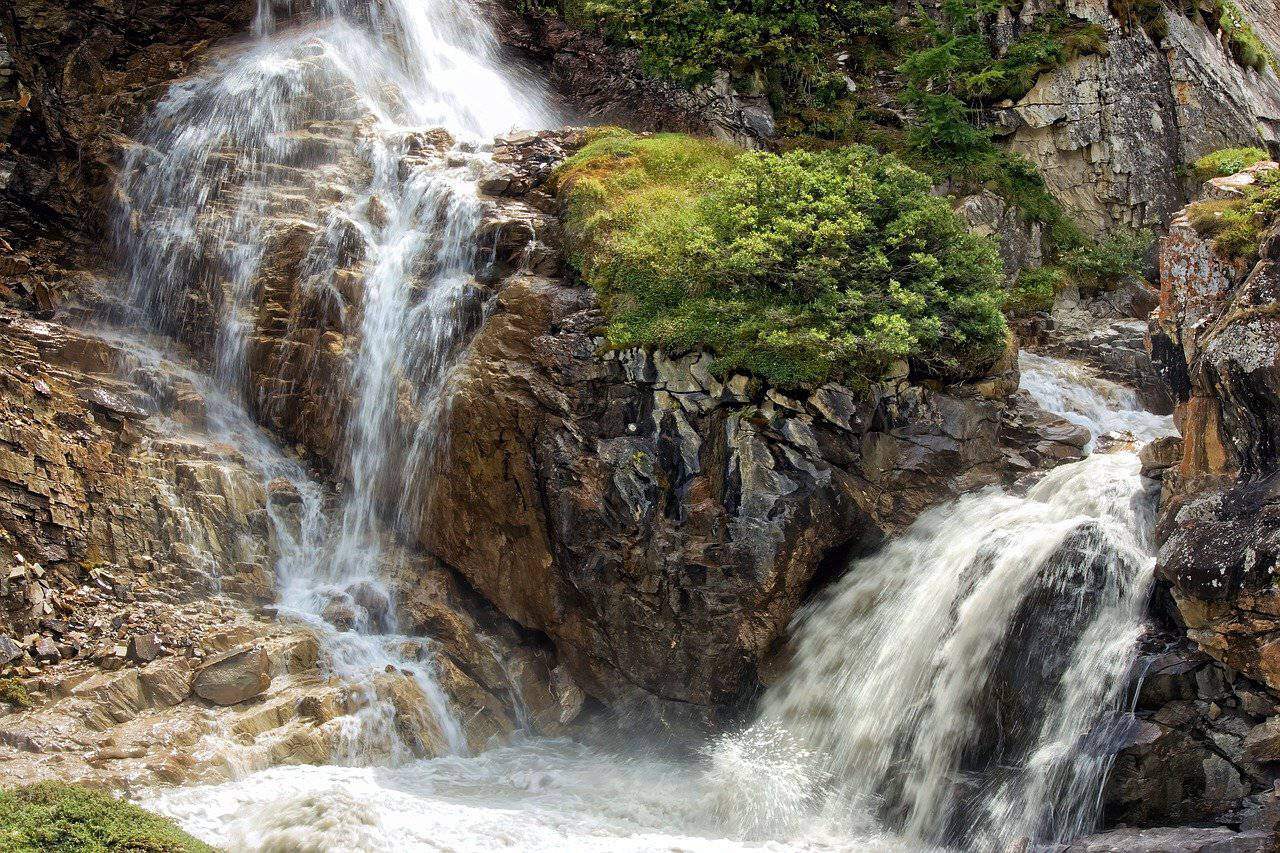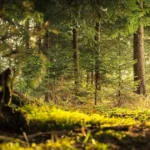Ecology and Environment Conservation are vital for safeguarding our planet’s health. Preserving Our natural world is crucial because it ensures the well-being of all living organisms, including humans.
Ecology focuses on how living things interact with each other and their environment, while environment conservation involves protecting natural resources and ecosystems.
Without proper conservation efforts, ecosystems can become imbalanced, leading to habitat destruction and loss of biodiversity. By understanding the importance of ecology and environment, we can take action to protect and preserve our planet for future generations.
It’s our responsibility to cherish and care for the natural world, as it provides us with essential resources and a beautiful home.
What is Ecology and Environment?
Ecology is like nature’s puzzle, studying how all living things connect and interact with each other and their surroundings. It’s like peeking into a busy ant hill, seeing how ants work together and depend on their environment.
From tiny bugs to mighty trees, ecology explores the web of life, showing how each piece fits into the bigger picture.
The environment is our playground, the air we breathe, the water we drink, and the land we walk on. It’s everything around us, from bustling cities to serene forests.
Our environment provides us with resources like food, water, and shelter, shaping our lives in countless ways.
In ecology, biodiversity is the spice of life, showcasing the rich variety of plants, animals, and ecosystems on Earth. Ecosystems are like nature’s communities, where plants, animals, and their environments work together in harmony.
Sustainability is the golden rule, ensuring we use resources wisely to protect the planet for future generations.
Understanding the Difference Between Environment and Ecosystem
The environment is like a giant canvas, painting the backdrop for life’s stage. It encompasses everything around us, from the air we breathe to the soil beneath our feet.
Think of it as the big picture, including both natural and human-made elements like forests, rivers, cities, and farms. It’s the sum of all parts, shaping our world in countless ways.
Now, zoom into a smaller frame, and you’ll find the ecosystem, a bustling community of plants, animals, and their surroundings. Picture it as a mini-world, where each component plays a vital role in the balance of life.
From the chirping birds in the trees to the tiny organisms in the soil, every creature interacts with its environment, creating a delicate dance of survival.
But here’s the twist: ecosystems don’t exist in isolation. They’re deeply intertwined with their environment, constantly shaping and being shaped by it. Just like a delicate dance, each step influences the next, creating a web of interconnectedness.
Whether it’s a forest ecosystem filtering our air or a coral reef protecting our shores, the relationship between ecosystems and their environment is a crucial thread in the fabric of life.
Importance of Ecology in Environmental Conservation
Understanding the significance of ecology is paramount in the realm of environmental conservation.
Ecology delves into the intricate web of interactions between living organisms and their environment, providing essential insights into how ecosystems function and thrive.
By grasping these dynamics, conservation efforts can be tailored to effectively preserve and restore natural habitats, ensuring the sustainability of our planet for future generations.
Also Read: Essential Variances: Freshwater vs Marine Ecosystems Comparison
Balancing Act: Maintaining Ecosystem Health
Ecology plays a crucial role in environmental conservation by helping to maintain the delicate balance of ecosystems.
Just like a well-tuned orchestra, each component of an ecosystem – from plants to animals to microorganisms – contributes to its overall health.
By studying these interactions, ecologists can identify potential threats and take action to preserve biodiversity and ecosystem function.
Biodiversity’s Role: Protecting Species and Habitats
Biodiversity is the spice of life, adding richness and resilience to ecosystems. Every species, whether big or small, plays a unique role in its habitat.
By protecting biodiversity, we safeguard the genetic diversity of plants and animals, ensuring their ability to adapt to changing conditions.
Conservation efforts focus not only on charismatic species but also on preserving entire habitats, from lush rainforests to vibrant coral reefs.
Ecological Services: Benefits to Human Well-being
Ecology provides a wealth of benefits to human well-being, known as ecological services. From purifying our air and water to regulating climate and pollinating crops, ecosystems support our daily lives in countless ways.
By conserving natural habitats and promoting sustainable practices, we can ensure the continued provision of these essential services for future generations.
Ecology teaches us to respect and appreciate the interconnectedness of all life on Earth, highlighting the importance of protecting our planet’s precious resources.
Strategies for Environment Conservation Through Ecology
In the pursuit of environmental conservation, employing strategies grounded in ecology is paramount. Ecology offers invaluable insights into the functioning of natural systems, guiding efforts to preserve and restore ecosystems.
By leveraging ecological principles, we can develop effective strategies that address the root causes of environmental degradation and promote sustainable stewardship of our planet.
Habitat Restoration: Reclaiming and Revitalizing Ecosystems
Habitat restoration stands as a cornerstone of environmental conservation, aiming to revive ecosystems that have been degraded or destroyed.
Through ecological assessments and careful planning, degraded habitats can be rehabilitated, allowing native species to flourish once again.
Restoration efforts often involve removing invasive species, replanting native vegetation, and restoring natural hydrology, ultimately fostering resilience and biodiversity within ecosystems.
Sustainable Resource Management: Preserving Natural Resources
Sustainable resource management lies at the heart of ecological conservation, seeking to balance human needs with the preservation of natural resources.
By adopting practices that minimize waste, reduce pollution, and promote renewable energy sources, we can mitigate the environmental impact of resource extraction and consumption.
Through sustainable management, we ensure that future generations can continue to benefit from the essential resources provided by our planet.
Conservation Education and Awareness: Empowering Communities
Empowering communities through conservation education and awareness is a powerful strategy for fostering a culture of environmental stewardship.
By providing accessible education on ecological principles, conservation practices, and the importance of biodiversity, we can inspire individuals to take action in their daily lives.
Engaging communities in conservation initiatives fosters a sense of ownership and responsibility, empowering them to become active participants in safeguarding the environment for generations to come.
Policy Advocacy: Influencing Decision-making for Environmental Protection
Policy advocacy serves as a crucial tool in driving systemic change and advancing environmental protection efforts.
By advocating for evidence-based policies that prioritize ecological conservation, we can influence decision-makers at local, national, and international levels.
Effective policy advocacy involves collaboration with stakeholders, engagement in public discourse, and leveraging scientific research to inform policy development.
Through concerted advocacy efforts, we can enact meaningful legislative changes that support environmental sustainability and protect the natural world.
Challenges and Solutions in Ecology and Environment Conservation
Navigating the complexities of ecology and environmental conservation presents both challenges and opportunities for safeguarding our planet’s future.
By identifying key challenges and implementing innovative solutions, we can address pressing environmental issues and pave the way for a more sustainable world.
Human Impact: Addressing Pollution, Deforestation, and Habitat Loss
Human activities, such as pollution, deforestation, and habitat loss, pose significant threats to ecosystems worldwide.
Pollution from industries, agriculture, and urbanization contaminates air, water, and soil, endangering both human health and environmental integrity. Deforestation for agriculture, logging, and urban expansion destroys critical habitats and contributes to biodiversity loss.
Addressing these challenges requires concerted efforts to reduce emissions, implement sustainable land-use practices, and promote habitat restoration initiatives.
Climate Crisis: Adapting to and Mitigating Climate Change Effects
The escalating climate crisis presents a formidable challenge to ecology and environmental conservation efforts.
Rising temperatures, extreme weather events, and sea-level rise threaten ecosystems and exacerbate existing environmental stressors.
Adapting to climate change involves enhancing resilience in ecosystems, implementing climate-smart agricultural practices, and developing sustainable infrastructure.
Mitigating climate change requires ambitious efforts to reduce greenhouse gas emissions, transition to renewable energy sources, and promote carbon sequestration initiatives.
Collaborative Efforts: Engaging Stakeholders for Collective Action
Addressing ecological and environmental challenges necessitates collaborative efforts and collective action from stakeholders across sectors.
Engaging governments, businesses, non-governmental organizations, and local communities is essential for implementing effective conservation strategies and fostering sustainable development.
Collaboration facilitates knowledge sharing, resource mobilization, and the development of innovative solutions to complex environmental problems.
By working together, we can harness the collective power of diverse stakeholders to achieve shared conservation goals.
Innovation and Technology: Harnessing Tools for Environmental Monitoring and Conservation
Innovation and technology play a pivotal role in advancing environmental monitoring and conservation efforts.
Remote sensing, geographic information systems (GIS), and satellite imagery provide valuable data for assessing ecosystem health and identifying conservation priorities.
Emerging technologies, such as artificial intelligence and machine learning, offer new opportunities for analyzing large datasets and predicting environmental trends.
Harnessing innovative tools and technologies enables more efficient and effective conservation interventions, empowering ecologists and environmentalists to make informed decisions for the protection of our planet’s precious resources.
Case Studies in Successful Ecology and Environment Conservation Initiatives
Examining successful ecology and environment conservation initiatives provides valuable insights into effective strategies and approaches for protecting our planet’s biodiversity and ecosystems.
In India, several notable conservation projects and programs have demonstrated the power of collaboration, innovation, and community engagement in achieving conservation goals.
For example, the “Project Tiger” initiative launched in 1973 aimed to conserve the endangered Bengal tiger by establishing protected tiger reserves and implementing anti-poaching measures.
Through rigorous monitoring and enforcement efforts, Project Tiger has contributed to the recovery of tiger populations in India, serving as a model for wildlife conservation worldwide.
Similarly, the “Chipko Movement,” which originated in the Himalayan region in the 1970s, mobilized local communities to protest against deforestation and promote sustainable forest management practices.
By embracing traditional ecological knowledge and grassroots activism, the Chipko Movement successfully protected forests and empowered communities to actively participate in conservation efforts.
Learning from Successes: Strategies for Replication and Scaling Up
By analyzing the successes of conservation initiatives like Project Tiger and the Chipko Movement, valuable lessons can be learned to replicate and scale up conservation efforts globally.
One key takeaway is the importance of community involvement and empowerment in conservation decision-making processes. Engaging local communities as stewards of their natural resources fosters a sense of ownership and responsibility, leading to more sustainable conservation outcomes.
Additionally, effective conservation strategies often involve interdisciplinary collaboration between government agencies, non-profit organizations, and academic institutions.
By pooling resources, expertise, and networks, stakeholders can leverage collective strengths to address complex environmental challenges.
Ultimately, learning from successful conservation initiatives empowers us to adapt and innovate in our approach to protecting the environment and securing a sustainable future for generations to come.
Conclusion
The imperative of addressing ecology and environmental challenges demands urgent action and collective responsibility from individuals, communities, and governments worldwide.
With ecosystems under increasing threat from human activities and the looming specter of climate change, the need for proactive conservation measures has never been greater.
Embracing our role as stewards of the environment, we must prioritize sustainable practices, reduce our ecological footprint, and advocate for policies that protect natural habitats and biodiversity. Moving forward, fostering individual and collective engagement is essential for effecting meaningful change.
By raising awareness, promoting education, and fostering collaboration, we can build a global movement dedicated to preserving our planet’s precious resources for future generations.
Together, let us heed the call of Ecology and Environment Conservation, ensuring a sustainable and harmonious coexistence with the natural world.






